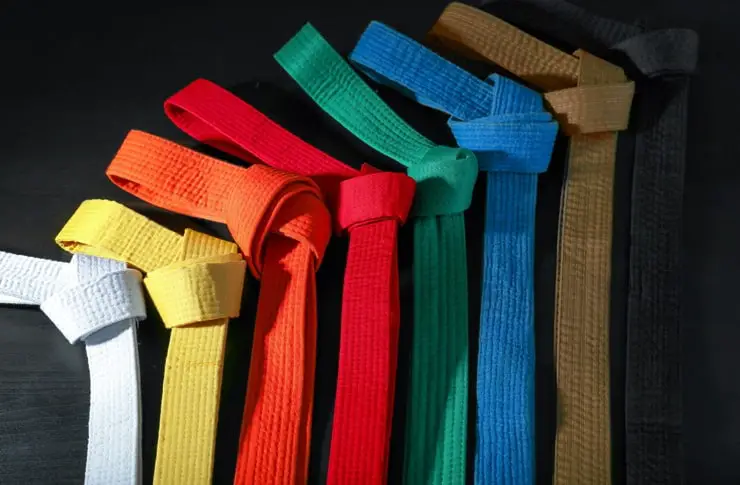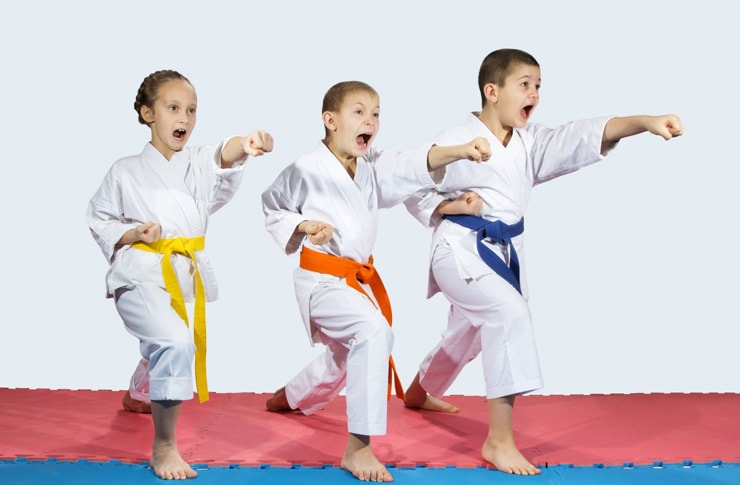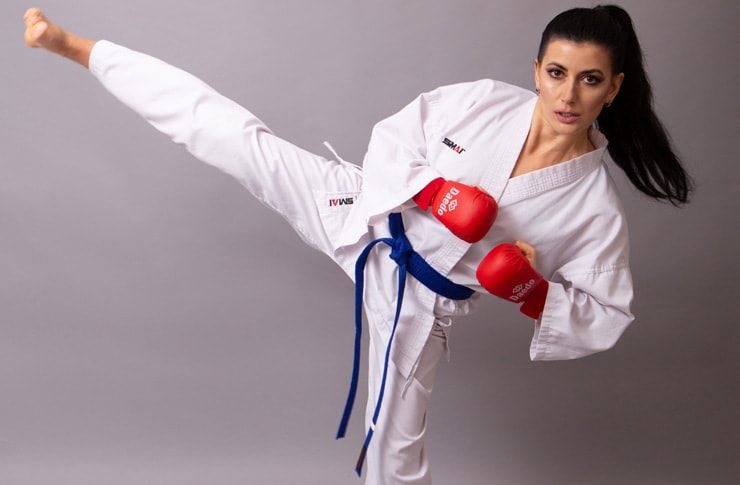
Karate is one of the oldest and most popular forms of martial arts in history. It continues to rise in popularity globally and continues to grow and improve in techniques and teachings.
Although it may change forms as it is passed down from generation to generation, the core values, beliefs, and self-improvement aspects have always remained the same.
For familiar with karate, they know that it is ranked by belt system and belt color. Each color represents which rank each karate practitioner is in and where their skills and length of training lies.
These colors differ a little depending on the martial art school you attend. Still, all the colors, where you start and where you finish remaining the same. White, yellow, orange, green, blue, purple, red, brown, black.
Each karate belt color represents a different meaning. Each color represents a student’s growth. It equates to a flower that grows when provided with enough sunlight, nourishment, and guidance. Below we’ll discuss the order of belts in Karate and the meaning behind them.
What are the Different Belt Colors in Karate?

Historically, each belt color would get darker as you advance in the class and gain more knowledge needed in self-defense. Again, some schools or sub-sections of karate will vary in belt rank distribution, but it does not take away from the meaning behind the colors.
There is no set length of time when advancing from one belt rank color to another, each student will advance in their own time at their own pace, once proving they have mastered each level and set of skills. No two students will move throughout their lessons at the same pace.
White (6-9 Months Before Advancing)
In karate, the white belt is a symbolization of a person’s “birth” into practice. When a person first dedicates themselves to karate and is just starting on their journey. A beginner starts with a white belt. Therefore, they have not yet earned the right to practice hitting. You will first train in and learn the techniques of the class.
The white belt symbolizes the birth or beginning of a person’s will to acquire the skills of karate, and it is worn by those who are just beginning their study. Students learn when they begin that hitting others will not be tolerated. People are trained in technique before engaging in any combat.
Yellow (7-9 Months Before Advancing)
The yellow belt indicates the color of the sun, the beam that shines down from the sky to the earth aiding in the growth of new life. The yellow belt is awarded to those who have shown they have mastered all the basic skills in karate.
Here, you will learn basic stances, kicks, blocks, punches, etc. You will be able to start contact training and sparring but not yet at 100%. There is still much more to learn before you are ready to practice full-on combat.
Orange (9-10 Months Before Advancing)
The orange belt is given once you have mastered at least ten karate moves. This karate belt represents the sun’s strength. It represents their ability to help one continue to grow and get stronger while advancing in their lives.
Once you have earned your orange belt, you start to practice more advance and skillful combat moves and take-downs. You will also begin to practice the importance of respect, kindness, and courtesy that are core beliefs in karate.
Green (10-12 Months Before Advancing)
The green belt represents students taking root and growing upwards towards the sun, getting better and stronger every day. You are improving your skills in this stage and ensuring every aspect of this area is mastered.
Here you start to focus on combat skill mixing striking and grappling skills, and the student begins to become more responsible for learning on their own.
Blue (12-20 Months Before Advancing)

The blue belt represents the sky. It represents how the plants (or student) is growing upwards towards the sky improve along the way. The blue belt acknowledges the student is developing their knowledge of combat skills and core beliefs behind karate.
It is the level where real sparring begins for most schools and when the student has learned the skills needed to defend themselves.
Purple (12-20 Months Before Advancing)
The purple belt is when the student transitions from a learning student to a person well advanced in their knowledge and skills. Purple represents the color of dawn, where the sun is starting to shine, bringing on new life to the day.
Purple indicates the student has become serious about their practice and is ready to advance into more challenging techniques and skills.
Red (12-20 Months Before Advancing)
The red belt indicates a hot burning sun, the dangers behind it if you were to come to close. It is a representation of how skillful of a fighter a student has become. They have mastered most of the skills and moves in karate, making them capable of fighting to defend themselves and now helping to teach others how to do the same.
Brown (12-20 Months Before Advancing)
The brown belt is the representation of the plant is fully grown and ready for harvest. It has been nurtured and cared for up to this point and is ready to face the world. The student has learned all that they need to be successful in self-defense and taking on the world.
It is the last step before a student earns their black belt. In this phase, students will focus on their weaknesses and improve their techniques in all combat and mental areas preparing themselves for the final level.
Black (20+ Months Before Advancing)
The color black represents the universe behind the sun, the endless space for continuous learning, growing, and advancing in karate and life. Here you have shown you can defend yourself in any situation, and you only now need to continue to practice and improve yourself every day physically and mentally.
Once a student has earned their black belt, they are now masterful in karate and can teach others the way of self-protection and the core beliefs of karate, and the mental, physical, and emotional strengths that it brings.
Conclusion

Just as a flower starts as nothing but a tiny seed and will grow and strengthen bursting towards the sky, becoming a strong and powerful plant, so does a student practice the art of karate.
Moving throughout each color, gaining new skills and techniques, every student slowly gains the knowledge needed to protect themselves in any given situation. Once they reach the final levels, they do not stop learning. Instead, they accept and understand that they will continue to learn their entire lives and will share that knowledge with others.
Reaching your black belt does not mean that you have come to the end of learning the art of karate, but instead means you are ready to share what you do know with less experienced and new students. Preparing them for a long journey into knowing and understand themselves and the art.
